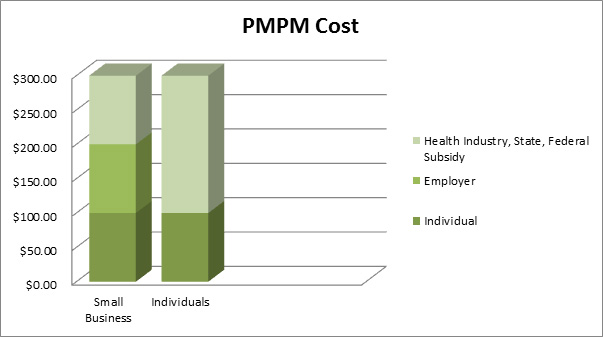About Simplified Healthcare
The United States has been debating about Health Care Reform for decades, yet there are still nearly 50 million Americans who lack health insurance today. Health Care costs are growing at exponential rate. President Obama has made healthcare reform as his top priority. Making Health Care affordable for all is finally a reality. However, in the maze of thousands of pages of legislation, sometimes law makers miss some of the most Simple Fundamental Changes that could Reform Health Care from its roots. At Simplified Health Care, we would like to suggest some "common sense" changes that could bring accountability, affordability, and equity to ensures access to Health Care for every American.


Simplified Healthcare envisions a Healthcare plan specifically designed for small businesses consisting of 1 to 49 employees and Individuals within 140% to 300% Federal Poverty Level. The US has a population of 325 billion people. Roughly 17% of the US population is uninsured, being either small business employees or individuals. This plan is specifically designed to insure this group of individuals by offering an affordable healthcare plan when the individual's contribution is set at $100 with a total PMPM of $300.

There would be a need of $101,748,000,000 to provide Simplified Healthcare to the 17% of Americans qualified. The Simplified Healthcare plan would require subsidy from the health industry, federal government, as well as each individual state. Within the US the healthcare industry has an annual expense of $3,200,000,000,000. Simplified Healthcare is proposing that the industry is taxed on 1.1% of that expense, in order to assist in covering this middle class consisting of 55,250,000 Americans. Federal and State subsidy would then contribute toward the remainder.
Critical Elements of Health Reform that Senate, House or President Should NOT compromise on :
Eliminate Pricing Discrimination :
Are you aware that most hospitals, doctors, labs, and pharmacies charge the highest rate to those who can least afford it (un-insured). Some would argue that it is a free-market system! Do you think it is it fair to bill the highest rate to the one who has the least resources? What does America need? A Simple legislation that requires Medical providers to charge the same rate for the same medical services to everyone (including the un-insured) regardless of what insurance card a person carries.
High Deductible Catastrophic Coverage for the un-insured:
Mandate and provide high-deductible coverage for those who are un-insured This high-deductible will provide a safety net to both the patient and the Provider in the event of catastrophic illnesses. This coverage Will Not Adversely Impact Federal Budget. High-deductible plans cost less and will enforce the user discipline in containing overall costs.
Everyone Wins with Simplified Health Care Reform
As fellow Americans, we feel that everyone should have equal access to health care. With Simplified Health Care Reform every one benefits – Patient, Providers (Doctors, Hospitals, Labs), and Payors (Insurance Companies & Government).
Patient (Un-Insured):
High deductible plans cost less and provide a safety net for catastrophic illnesses. By eliminating a pricing discrimination, access to health care will be improved and preventive care will be more appealing to the currently un-insured Americans.
Patient (Currently Insured):
Uniform pricing will reduce administrative costs. Both Payors and Providers spend tremendous amounts of resources in billing jargons such as "allowed amount", "patient responsibility", "adjudication", and many more. These resources will be conserved and saved under a uniform pricing. Savings will in-turn reduce the Patient premiums over time. Currently, you are paying for the un-insured indirectly. Hospitals and other providers often write-off un-insured services. Time and again they hire collection agencies to go after the un-insured. All these resources cost money. This in turn increases the costs for paying patients. Once a large majority of Americans are covered under some type of Health Care plan, your costs will go down.
Providers (Doctors / Hospitals / Labs):
Payments will be assured from all patients as everyone will be covered by some type of insurance. In turn, collections and write-offs will be reduced substantially.
A uniform pricing will reduce administrative costs. Most providers spend between 4% to 8% in billing and collection due to the complex pricing structures. With a uniform pricing structure, administrative costs could be cut down to less than ½ of that.
Productivity will be improved for the provider staff as waste resources for billing issues will be eliminated.
Payor (Insurance Companies / HMO):
There are a potential of 50 million more customers! In today's economy that is a wind-fall. A uniform pricing will reduce administrative costs and increase network access to your members. Economies of scales with larger client base – reduce costs – increase profit.
Payor (Government):
President Obama delivers on his campaign promise. The United States of America can proudly proclaim that the country does take care of healthcare needs of every fellow American regardless of their financial status Higher Deductible Plans will cost less and could be made budget neutral with limited sliding scale subsidy.